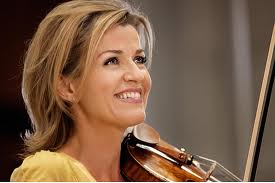|
Symphony
SRS SEASON ENDS WITH RESOUNDING TA-TA-TA-BANG
by Terry McNeill
Sunday, June 1, 2025
Symphony
YOUTHFUL VIRTUOSITY ON DISPLAY AT USO'S MAY CONCERTS
by Peter Lert
Saturday, May 17, 2025
Symphony
MYSTICAL PLANETS AND LIVELY GERSHWIN ORTIZ AT FINAL SRS CONCERT
by Peter Lert
Sunday, May 4, 2025
Symphony
VSO'S CONCERT MUSIC OF TIME, MUSIC OF PLACE
by Peter Lert
Sunday, April 27, 2025
Choral and Vocal
VOCAL ELEGANCE AND FIRE AT THE 222'S RECITAL APRIL 26
by Pamela Hicks Gailey
Saturday, April 26, 2025
CANTIAMO SONOMA SINGS AN INSPIRED GOOD FRIDAY MOZART REQUIEM CONCERT
by Pamela Hicks Gailey
Friday, April 18, 2025
DRAMATIC SHOSTAKOVICH SYMPHONY CLOSES PHILHARMONIC'S 25TH SEASON
by Terry McNeill
Sunday, April 13, 2025
LARGE COLLEGE OF MARIN AUDIENCE GREETS STOPHER ARTISTRY
by Terry McNeill
Saturday, April 5, 2025
Chamber
FRISSON DELIVERS SHIVERS OF DELIGHT
by Abby Wasserman
Sunday, March 30, 2025
OLD AND MOSTLY NEW IN SRS MARCH CONCERT IN WEILL
by Peter Lert
Saturday, March 22, 2025
|
 |
 Violinish Anne-Sophie Mutter |
LUTOSLAWSKI PARTITA THRILLING IN MUTTER'S WEILL RECITAL
by Terry McNeill
Saturday, March 2, 2013
Violinist Anne-Sophie Mutter charmed a Weill Hall audience March 2 in a recital that eschewed popular works and elicited rapt attention from the 1,300 listeners present. Forgoing the staples of the Brahms and Beethoven sonatas, or the Franck and Prokofiev, the German artist played provocative and exciting music with her pianist of long standing, Lambert Orkis.
Lutoslawskiís thorny five-movement Partita from 1984 was played in the second half and was a tour de force for the violinist with a rollicking beginning, eerie octave slides and high-pitch whines on two and three strings. Intermixed into a piece of much cacophony was Ms. Mutterís lovely touch, and though the violin part wanders, she was perfectly in sync with Mr. Orkis. Itís rare for a string player to have the same pianist for more than a few years, yet the Mutter-Orkis duo has been together since 1988. The Partita has sections of wide instrumental departure that often resolve quickly into unison playing. Both musicians were impeccable in this difficult work, which is more about sound than notes. Mr. Orkis is a superbly fluent artist who never covered his partner, and it was rare to hear a real forte chord from the piano.
Fluent and committed playing was also heard in the recitalís concluding work, Saint-SaŽns' D Minor Sonata. It was a reading full of passion and free from any hint of vulgarity or the Lutoslawskiís dissonances. The difficult bowing in the Scherzo was beautifully and crisply done (four fast up bows in a row) and the transition to the perpetuo moto finale was well handled. The playing was fast and exciting, and the sixteenth-note passages near the explosive end were well coordinated and drove inexorably to the finish.
The concert opened with Mozartís G Major Sonata, K. 379, in a romantic conception that took the repeats in the variation movement (Andante cantabile) with different dynamics and articulation. This is a hallmark of romantic era music making where repeats always have many subtle differences. At several points Ms. Mutter used a spiccato bow and sporadically played exquisite legato scales, and once after a long upward scale passage she deftly paused before the last note. A lovely effect.
In the solo piano opening to the Schubert C Major Fantasie (D. 934), Mr. Orkisí tremolo was not quite as magical as possible, but the violinistís entrance was magical enough, the beginning so quiet as to be almost inaudible. As the dynamic became louder, still in the opening passage with piano tremolo, Ms. Mutterís vibrato began to intrude. The second "movement" allegro was played in a more restrained manner than one usually hears, to good effect.
The long variations movement was at times shaky and foreshortened by the duoís decision not to take any of the repeats after the thematic statement, which has a ďwritten inĒ repeat in which the instruments alternate taking the lead. Most performances include these repeats. Hungarian touches were captured by the duo as well as some brooding drama.
One encore was offered, Ravelís "Vocalise …tude En Forme de Habanera." This gem in G Minor was seductively played by Ms. Mutter and all the more effective after the excitement of the Saint-SaŽns sonata.
Bronislaw Irving contributed to this review.
|
